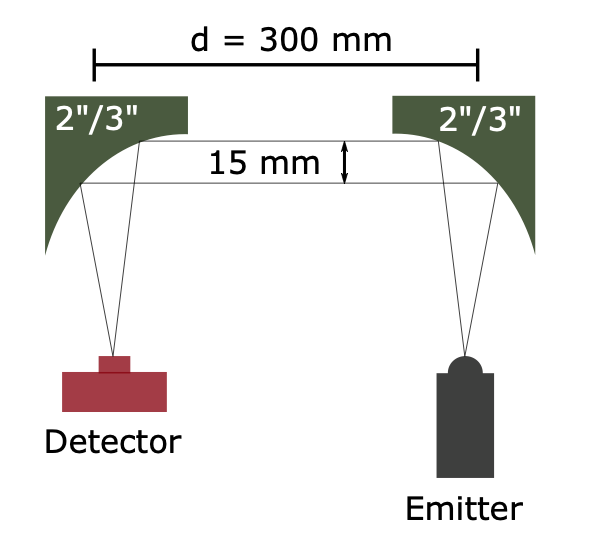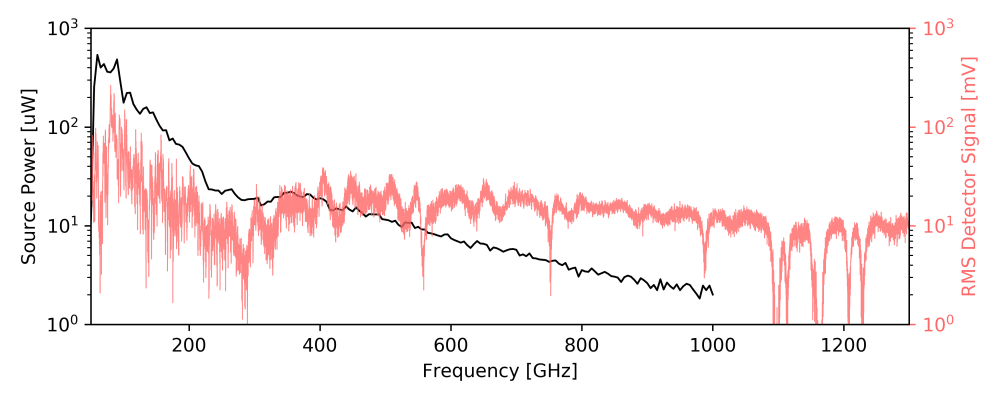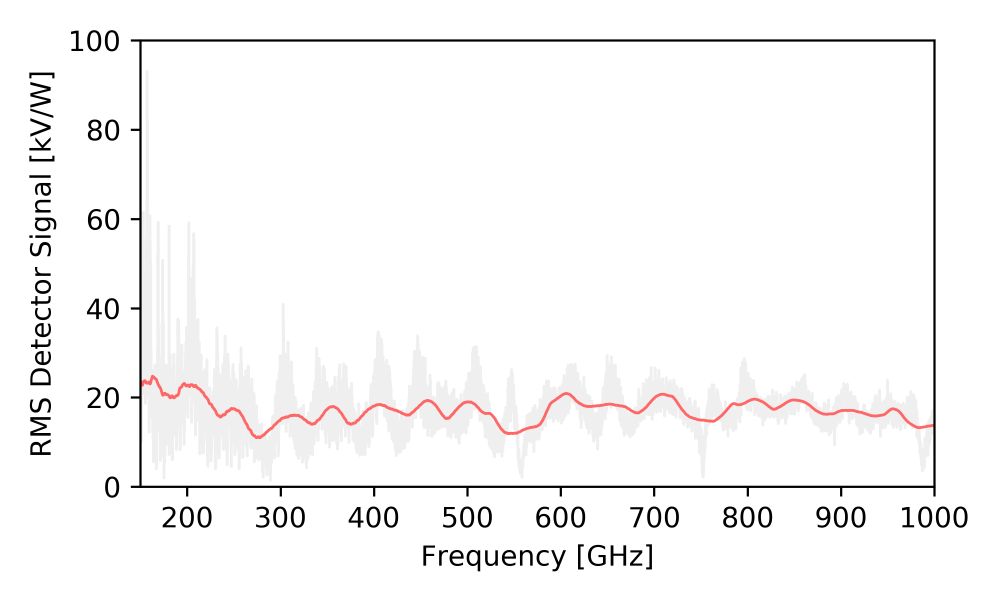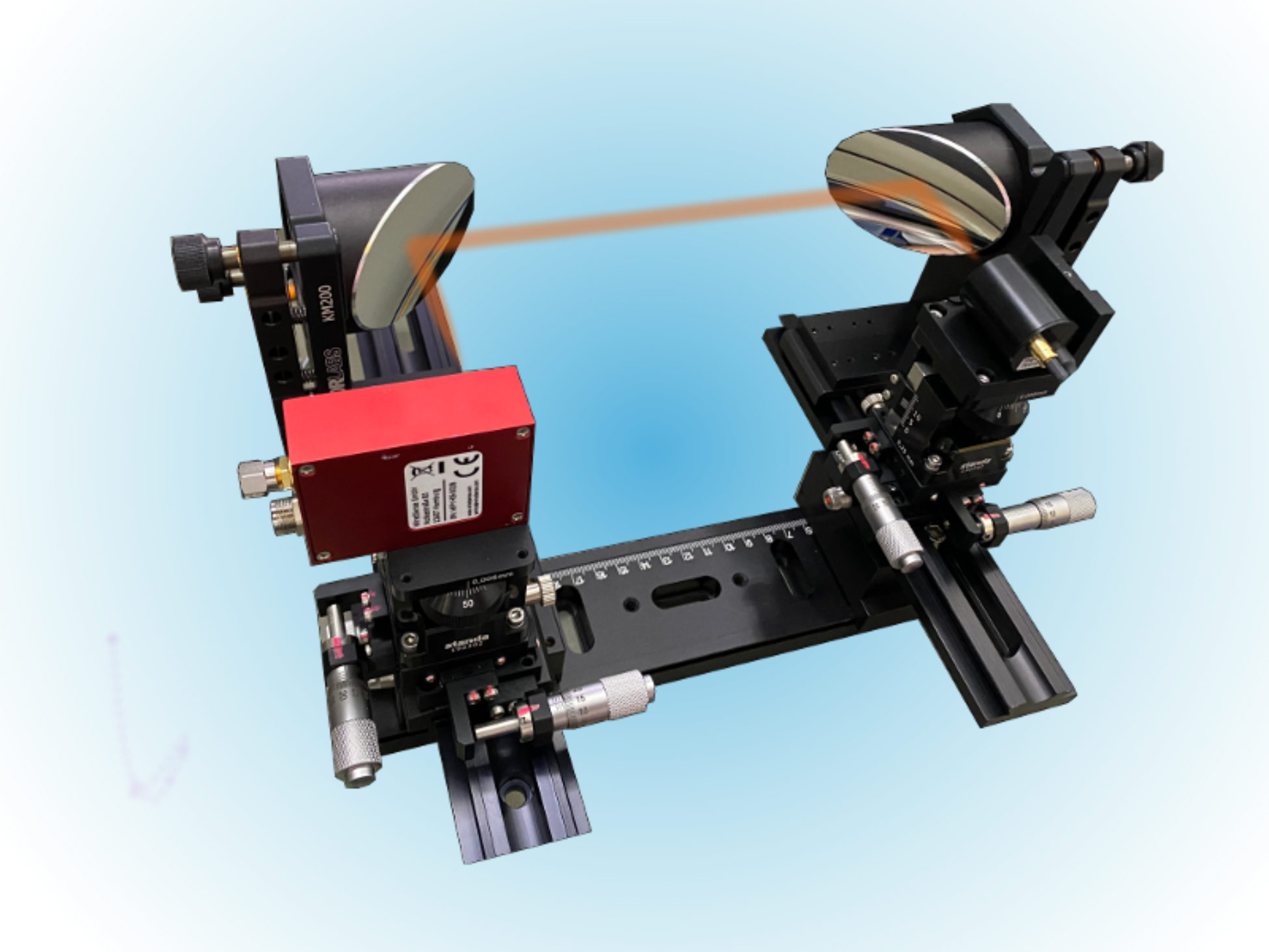THz spectroscopy setup
THz radiation was generated via two DFB diode lasers mixed in an InGaAs photodiode (TeraScan 1550 from TOPTICA). The diverging beam was collimated by a parabolic mirror with 2“ diameter and 3“ focal length. The collimated beam was transported through an air passage of ~30 cm leading to water absorption lines in the spectrum. To focus on the detector element with a size of 2x2 mm, an identical parabolic mirror was used. Detector and emitter were placed in the focus point of the respective parabolic mirror (see. Fig. 1).

The frequency of the emitter was adjusted by tuning the wavelengths of the two lasers. For each frequency step the modulated power was measured with a lock-in amplifier at f = 1 kHz. Fig. 2 displays the measured spectral response. The sharp absorptions peaks are characteristic water absorption lines. The width of the red curve is determined by standing waves in the setup.

To obtain an absolute power calibration of the MPY-RS2 detector below 1 THz, the mismatch of detector element size with the transform limited THz spot size was corrected. Fig. 3 shows the spectrally flat detector response with responsivity of ~20 kV/W. The raw data (gray) was smoothed to filter standing waves in the experimental setup.

PDF of this document
